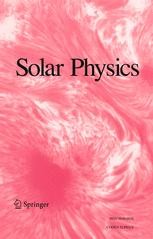Editors' Choice: "Analysis of the Helical Kink Stability of Differently Twisted Magnetic Flux Ropes"
 Florido-Llinas, M., Nieves-Chinchilla, T. & Linton, M.G. Analysis of the Helical Kink Stability of Differently Twisted Magnetic Flux Ropes. Sol Phys 295, 118 (2020). https://doi.org/10.1007/s11207-020-01687-z
Florido-Llinas, M., Nieves-Chinchilla, T. & Linton, M.G. Analysis of the Helical Kink Stability of Differently Twisted Magnetic Flux Ropes. Sol Phys 295, 118 (2020). https://doi.org/10.1007/s11207-020-01687-z
Editor's Choice (Research Article)
Published: 01 September 2020
Topical Collection: Towards Future Research on Space Weather Drivers
Abstract:
Magnetic flux ropes (MFRs) are usually considered to be the magnetic structure that dominates the transport of helicity from the Sun into the heliosphere. They entrain a confined plasma within a helically organized magnetic structure and are able to cause geomagnetic activity. The formation, evolution, and twist distribution of MFRs are issues subject to strong debate. Although different twist profiles have been suggested so far, none of them has been thoroughly explored yet. The aim of this work is to present a theoretical study of the conditions under which MFRs with different twist profiles are kink stable and thereby shed some light on the aforementioned aspects. The magnetic field is modeled according to the circular–cylindrical analytical flux rope model in Nieves-Chinchilla et al. (Astrophys. J. 823, 27, 2016) as well as the Lundquist and Gold–Hoyle models, and the kink stability is analyzed with a numerical method that has been developed based on Linton, Longcope, and Fisher (Astrophys. J. 469, 954, 1996). The results are discussed in relation to MFR rotations, magnetic forces, the reversed chirality scenario, and the expansion throughout the heliosphere, among others, providing a theoretical background to improve the current understanding of the internal magnetic configuration of coronal mass ejections (CMEs). The data obtained by new missions like Parker Solar Probe or Solar Orbiter will give the opportunity to explore these results and ideas by observing MFRs closer than ever to the Sun.
Solar Physics Editor's Choice:
In each volume of Solar Physics, a few articles are marked as “Editors’ Choice”. The primary criteria is original, high quality research that is of wide interest within the community.
